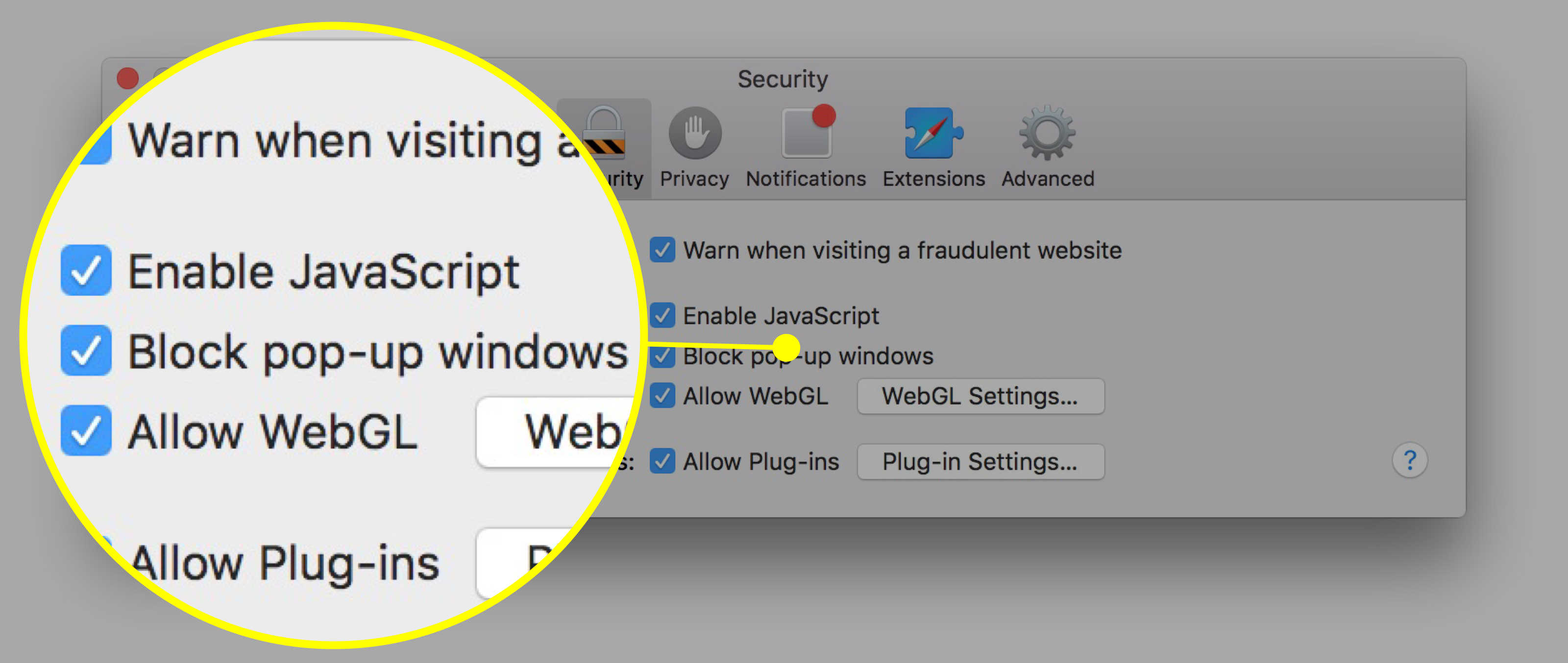

- HOW TO ALLOW POP UPS ON SAFARI HOW TO
- HOW TO ALLOW POP UPS ON SAFARI MAC
- HOW TO ALLOW POP UPS ON SAFARI WINDOWS
The other two options are “Block” and “Allow.”
HOW TO ALLOW POP UPS ON SAFARI WINDOWS
These are captured whether you have two separate windows open or two tabs within the same window.Įach of these websites will come equipped with a drop-down menu that you can click on for further options. The second pane that appears on the right when you select Pop-Up Blockers will give you a list of currently open websites. You’ll have to allow them, too, since, as we’ve already mentioned, Safari’s default is “Block and Notify.” This is the screen where you’ll be able to allow pop-ups. The left side will give you a number of options that include Reader, Content Blockers, Auto-Play, Page Zoom, Camera, Microphone, Screen Sharing, Location, Download, Notifications, and, at the very end, Pop-Up Blockers. This will take you to a split-pane screen. These include the following:Ĭhoose the Websites option for our purposes. You’ll get 10 tab configurations to choose from. You’re only looking for one right now: Preferences. This will produce a drop-down menu with a number of options. Next, click Safari in the upper left-hand corner of your monitor. You don’t have to go to the website you want to enable straightaway, but you certainly can. This is true either as a whole or on a site-by-site basis.
HOW TO ALLOW POP UPS ON SAFARI HOW TO
Here’s how to change it.Įven though pop-ups are blocked by default, Safari realizes there are plenty of useful cases where you’ll want to enable them. Remember, Apple emphasizes security in its web-browsing experience, so the default is to block and notify you that a pop-up window has been blocked. Now that we know how pop-ups can be beneficial, to both the site owner and their audience, it’s time to discuss how to enable them in Safari. Doing this via a pop-up window can allow the user to make purchases without interrupting the flow of their visit. Furthermore, online shopping may require a user to switch from a non-secured website to a secured website. Making sure audience members see key products and services relevant to their situations is another good reason for using pop-ups. They can even tailor future correspondences to whatever brought you to their site in the first place, so you’re getting personalized correspondence rather than cookie-cutter follow-ups that do not apply to you.

This allows them to stay in touch and continue to add value. For this reason, a site owner may wish to run pop-ups, so he or she can collect your name and email address at your highest level of interest. Life gets busy, and we need reminders to keep things from falling through the cracks. If it builds a connection the right way, a visitor won’t want to miss an update. Signing UpĪ useful website brings entertainment, interesting information, and maybe even useful ways to make money to its audience. Enabling pop-ups for certain websites can bring you a lot more value than annoyance provided the site owner is handling pop-ups in a non-intrusive way. Online advertising done the right way means you’re getting messages and information on products you actually want or need that is, again, relevant to the site you are visiting. There’s an old saying in advertising that people love to buy but hate being “sold to.” This isn’t as true in the Internet age with the ability to advanced-target an audience with relevant offers and promotions. Here are the useful ways pop-ups serve their audience. However, before getting into how to enable pop-ups, we should note the reasons why you should. We’ll admit these tools can be annoying in the wrong hands. Some site owners are unscrupulous with how they deal with pop-up windows. That’s because the company sets “Block” as its default, thus cutting you off from a significant useful part of the Internet.
HOW TO ALLOW POP UPS ON SAFARI MAC
Learning how to enable pop-ups on Safari is one of the first things you should do when browsing your Mac product with Apple’s proprietary browser.


 0 kommentar(er)
0 kommentar(er)
